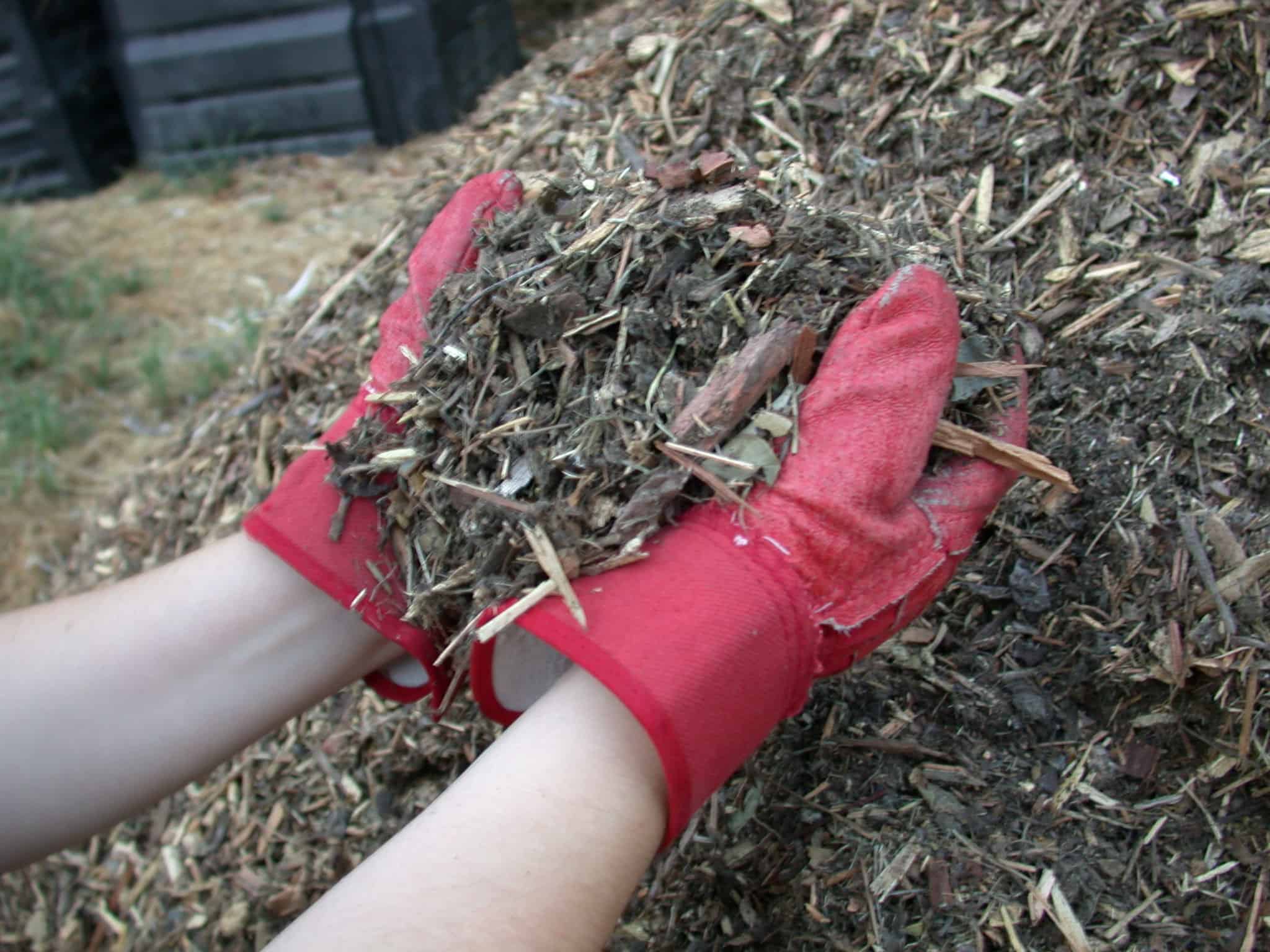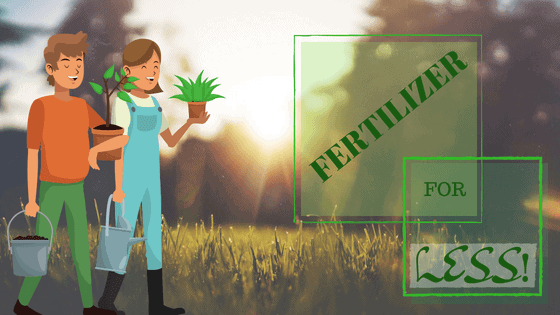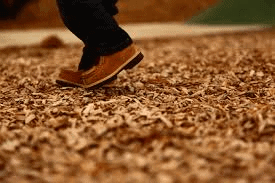
How to Mulch – An Introduction to Garden Mulching
We talk about commercially available plant fertilizers a lot here, but I would like to take the opportunity to write on the benefits of using mulch in your garden as well. This is a complex subject, but my goal today with this article is to provide you with a basic introduction on how to mulch your new garden plants or trees.
What is Mulch?
Mulch is simply a ground cover. It can be either organic or an inorganic matter such as plastic, stones or even those garden landscape fabrics you can find at Lowes or Home Depot. However, today I am primarily talking about natural mulches. I believe they are way better in terms of value for gardeners because they feed the soil. Sure, you have less maintenance with shredded rubber mulch material than you would with pine bark or sawdust. And there’s no question that they will do the job of keeping weeds under control.
These tree protection weed mats pictured above are an example of inorganic mulch products available.
I guess you could even technically say it’s organic since rubber mulch products come from a tree in some cases. The problem is that you are missing one of the more beneficial aspects of mulch, carbon breakdown. Today we are going to learn the benefits of natural mulch, and explain some new ideas on how to add nitrogen to mulch.
How Mulch Adds Nutrients to the Soil
Carbon found in soil is a good sign that there is a healthy community of microbial life in the soil. Bacteria break down carbon from natural forest mulch that falls to the ground. They convert decaying leaves, straw, and limbs into nutrients that feed and benefit living plants.
Additionally, any sources of nitrogen such as manure or rapidly decaying grass clippings tend to bind with the carbon in bark mulch. This makes it eventually become available to plants as the microorganisms do their work. In fact, you can greatly benefit your soil conditions by adding a little nitrogen to your mulch before spreading it. So, remember that mulch breaks down slowly over time. If your plants need nutrients now, you should apply a quality liquid garden fertilizer.

Added Benefits of Mulching
In addition to providing nutrients and retaining moisture around roots, mulches protect the soil from many things that should concern the experienced outdoor gardener. Wind and rain erosion in your landscape are best controlled with a helpful layer of mulch. Weeds are also much easier to manage in a mulched flower bed. You don’t have too many seeds with the energy required to break through the mulch and reach the sun’s light before dying off. Moisture retention is improved as well, and mulched soil protects plants from temperature swings in the early or late growing season.
Less Irrigation Requirements
Irrigation can be a major concern for even the most experienced kind of home gardeners out there. Here around Alabama, we experienced a historic drought in 2016. My property went a full three months without rain to replenish the soils moisture. You could see a marked difference between the trees, garden and flower beds that we mulched versus those without any.
Mulch limits evaporation from the soil surface area. It also helps with the even distribution of irrigation by slowing down infiltration, which can lead to erosion. If you soak an area without mulch too fast, it is easy to create a surface run-off event, which will leach nutrients downhill and rob your plants of food. Mulch helps with smart water management and may reduce your irrigation costs. Keep this in mind when you’re looking for ways to save money on gardening expenses.
Nitrogen Loss Concerns with Mulch
When you are working with an organic mulch like wood bark chips, shredded leaves or grass clippings, bacteria tend to lock up the small amounts of nitrogen present at the soils surface. For this reason, you should never till in a high carbon mulch. Tilling in wood chips, leaf clippings or similar mulches will temporarily cause a nitrogen deficit in the soil.

Simply placing mulch on the surface only allows the bacteria access to the very top layer of nitrogen in your soil. This prevents the problem because the temporary deficit there will not really harm plants with deep roots that are able to look elsewhere for nutrients.
‘Smart’ Mulching
If you want to add a bit of nitrogen to your mulch, it will be great for your plants! Keep reading and I will tell you how to add nitrogen to mulch before spreading it over your garden beds. However, be warned that your mulch will break down faster with this method. So, you will be reapplying more mulch much sooner with the idea I listed below.
How to Add Nitrogen to Mulch
You will need at least a 300-gallon stock tank to treat a cubic yard of mulch this way. If you don’t have a large size stock tank, you can always scale this down as an option. Just be sure to also scale back the amount of fertilizer products used. This method will work great with any high carbon mulch. Fill your stock tank with wood chips, pine straw, shredded leaves, or cocoa mulch. Dilute two quarts of Neptune’s Harvest Organic Fertilizer with water in a 5-gallon bucket. Be sure to stir in the fertilizer well. Pour this over your mulch you added to the stock tank.
Next, go ahead and fill the tank up with water to the level of the mulch. Let this soak for 24 hours, and be sure to stir with a shovel if possible. The carbon in your mulch should pick up a large amount of available nitrogen and other minerals from the fertilizer. Spread this treated mulch around your garden. You can also use the remaining liquid for fertigation. Feel free to share this info on how to add nitrogen to mulch with all your friends!
How Much Mulch Should a Gardener Mulch if a Gardener Could Mulch Mulches?
Like many things in gardening, the answer is IT DEPENDS! Generally, 3-4 inches of mulch is a good rule of thumb for most project locations. In locations with heavy clay soil, you can cause too much moisture retention by going over a level of 3-4 inches of mulch. In a site with sandy soil, you might increase to 4-6 inches of treated mulch to limit runoff and slowly build nitrogen back into the soil.
The most important thing I can tell you about gardening is to observe and interact. Wait a week or two after adding your mulch, and pull it back with a rake to inspect the soil. If it is soggy or flooded, you might have too much mulch causing excess water retention in that area. If it is moist but not too wet, you are probably okay for most plant roots that don’t need dry conditions more suited for growing succulents. Remember to scale back your irrigation process as appropriate. I find that I only have to water my vegetable garden about once a week here with mulch. In July if we have very little rain and lots of sunshine, I might increase that to 2-3 times a week. The mulch saves us money on watering expenses.

A Final Word on Mulch and Soil Health
I just wanted to take a moment to wrap up this article with a few tips to keep in mind when it comes to your soil health. When we do soil analysis for farmers to help them pick the right application of fertilizer, we test for carbon along with a variety of other nutrients. Higher levels of carbon usually indicate that the soil is full of life.
Mulch Attracts Beneficial Insects and Organisms
Mulch is a great way to create an environment that is friendly to healthy soil microorganisms. Not only will you attract microscopic life, but you will also bring in earthworms and other beneficial insects. Over time, this will reduce your dependency on fertilization from chemicals that may be adding excess salts to the soil.
Worms!
An acre of healthy earthworms can produce up to 700 lbs. of worm castings each day! Worm castings vary in fertility based on diet, but a common number is 1-1-5 according to the NPK ratio. In addition, calcium, magnesium, and other micronutrients are present in worm castings. So, feed the worms with mulch and you feed the plants. While they are busy converting mulch into fertilizer for you, they also aerate the soil. So, why till when you can mulch and let nature do the heavy lifting? You can often skip tilling for a year or so with mulch. Some gardeners even skip tilling altogether in favor of a deep layer of mulch.
Show Some Support
If you liked what you read, consider supporting our future articles. If you shop for home and garden tools or any outdoors items you want to buy anyway through a link below, we’ll earn a small commission that will not affect your final sale price. We’ll continue writing helpful ideas for your home garden, but we definitely need your help to keep the lights on!
Click Here to buy Mulch on Amazon
Related Buy – Earthworm Castings Organic Fertilizer
[Link Opens in New Tab]

[Back to Top]





